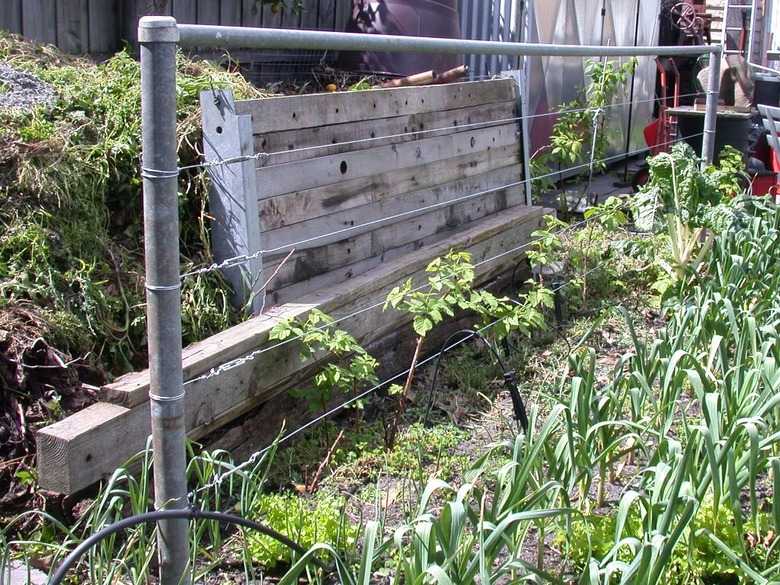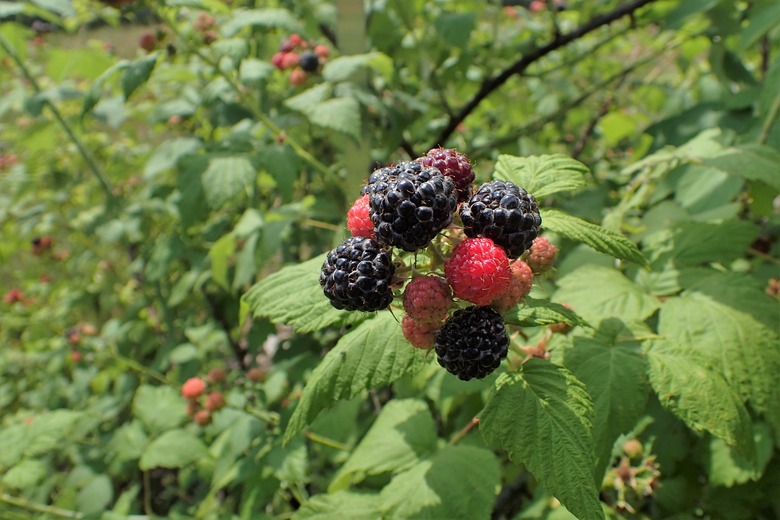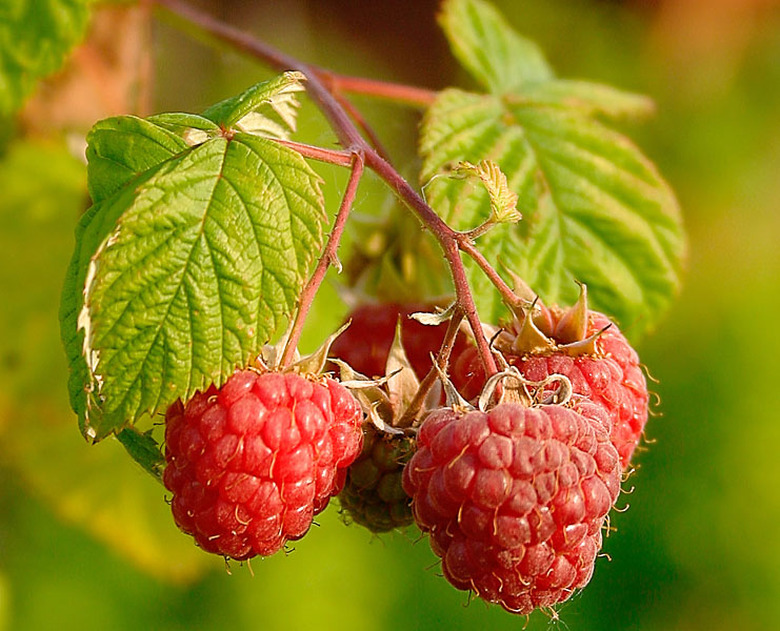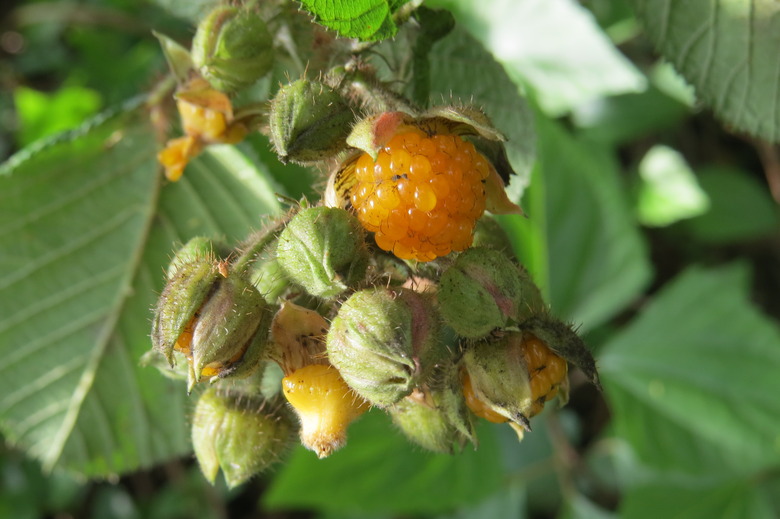How To Build A Raspberry Trellis
The plastic pots of vibrant American raspberry plants on the shelves of your local garden supply center are sure indicators that summer-bearing fruit is on its way.
Native to North America from Alaska southward and from USDA hardiness zones 3 to 10, depending on the variety, raspberries need to be supported in the home garden by a raspberry trellis to produce a healthy harvest.
Raspberry Varieties
Raspberries are available in several fruiting varieties. Black raspberries produce fruit only once a season, while red and yellow raspberries often produce two crops.
Black Raspberry
The black raspberry (Rubus occidentalis) is most popular in the northern areas of the United States. However, small black raspberries are a specialized fruit that have a short growth window of only a few weeks and grow successfully in USDA hardiness zones 5 to 8.
The long, thin stalks, known as "canes," of the black raspberry need the support of a trellis, and they are choosy in the company they keep. Do not plant them near red or wild raspberries. Extreme cold, such as that found in the far north, causes the black raspberry to die out.
Red Raspberry
The erect canes of the summer-bearing red raspberry (Rubus idaeus) ripen in the summer, and some are known to ripen twice during the season. New canes, or first-year canes known as primocanes, are youngsters and produce fruit the following year.
As they mature, the fruiting canes become known as floricanes, and small buds appear that turn into raspberries. The second-year canes grow taller during this maturation process. Attaching the canes to a trellis assures healthy growth of the summer-bearing or everbearing fruit.
Yellow Raspberry
Yellow raspberries (Rubus ellipticus) are mutations of the red raspberry and produce fruit from their floricanes. A trellis holds these everbearing raspberries erect and in the path of much-needed sun as they ripen. They are most successfully grown in USDA hardiness zones 2 to 10.
Everbearing or Summer-Bearing Raspberries?
Take a close look at the canes as they stretch up the trellis. Summer-bearing raspberries are already forming fruit on the floricanes that morphed from primocanes, and new primocanes are sprouting up. Everbearing raspberries are just forming flowers and buds on the canes to yield a fall crop of berries.
Tip
Summer-bearing raspberries produce one crop of fruit in the summer. Everbearing raspberries produce some fruit in summer after the first year and a significant harvest in fall.
Raspberry Support Ideas
Because raspberries grow on long, thin stalks, they need a strong trellis system as they mature. Trellising keeps the canes off the ground, which is especially important when they are heavy with fruit, thus avoiding insects, maintaining cleanliness and allowing easy harvesting. **Red, yellow and black raspberries need a trellis at least 2 feet tall with 10 feet between rows.**
Post-and-Wire Trellis
A post-and-wire trellis is the most popular, with some support from cross-posts, depending on the depth and length of the patch.
A simple raspberry bed can be successful with only the posts and wires as long as the plants are well-maintained, fertilized in early spring, have mulch around their bases to keep the roots moist but not water-logged and suckers are under control.
Commercial Trellis
A trellis often found at big box stores can be useful when you need to brace your canes against a wall.
It's also attractive to look at but doesn't allow for growth in the back, between the trellis and the wall.
The Best Trellis for Raspberries
**The best trellis for your raspberry patch is one that allows the sun to penetrate an entire cane,** as raspberries need almost a full day of sun.
Pruning is also vital as the canes grow. Be sure you can walk around the front and back of the patch to monitor for problems, sun penetration and if the canes need pruning. After the growing season is over, cut the summer-bearing stalks to ground level.
Making a Raspberry Trellis
Here's some guidance for how to make a basic trellis to support your raspberry plants.
Things You'll Need
To build a simple raspberry trellis, you need the following items:
- Two support posts 3 to 5 inches in diameter and 6 to 8 feet tall
- Galvanized support wires (numbers 12 or 14)
- Eyelet screws to attach the wires to the posts
- Drill
- Level
Directions
1. Set the posts into the ground 2 to 3 feet deep and 15 to 20 feet apart. 2. Drill wire holes into the posts at 2.5 feet, 3 feet and 5.5 feet and then string the wire through the holes. If you are using eyelet screws, place them into the holes and then string the wire. Avoid using clothesline cloth or twine, because it might rot from weather or sag as it stretches. 3. Run the canes from the bed upward and secure them to the cross wires with wire.
A crosspiece attached near the top of the wooden posts may need to be double-wired for strength.
Warning
Raspberry canes have thorns that can easily penetrate skin. Be cautious and wear gloves. A facial covering is also suggested, as the canes can snap back.
Specialized Trellis Ideas
A t-bar trellis with wooden supports drilled perpendicular to the posts adds support, especially for everbearing red and yellow raspberries that fruit twice a season. The drooping canes of the black raspberries also benefit from the support of a t-bar.
Tip
If you are using metal posts, be sure they have holes pre-drilled for stringing the wire.



